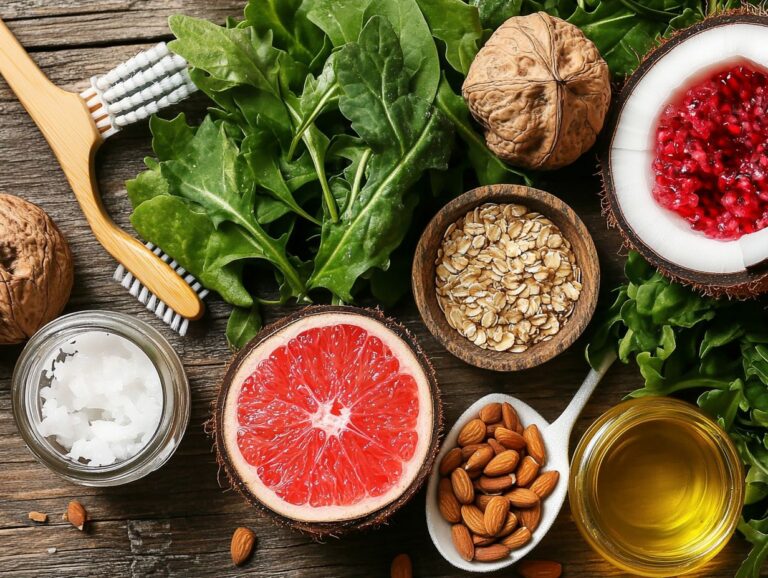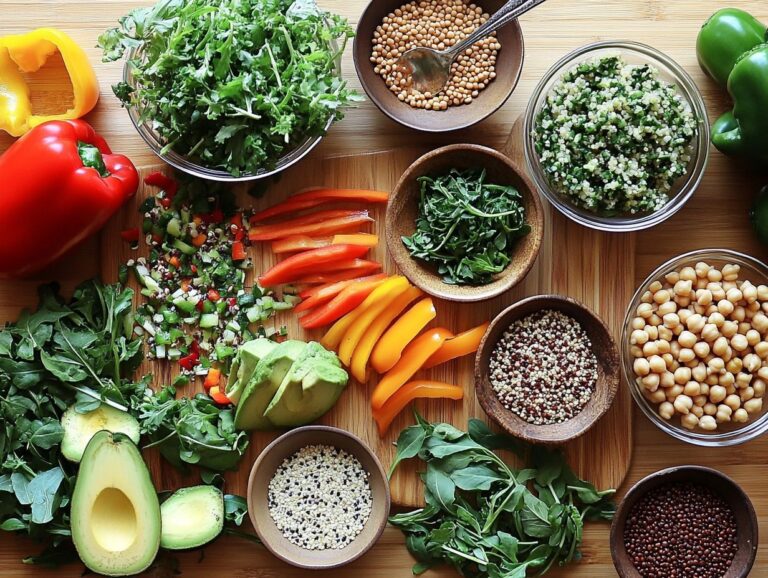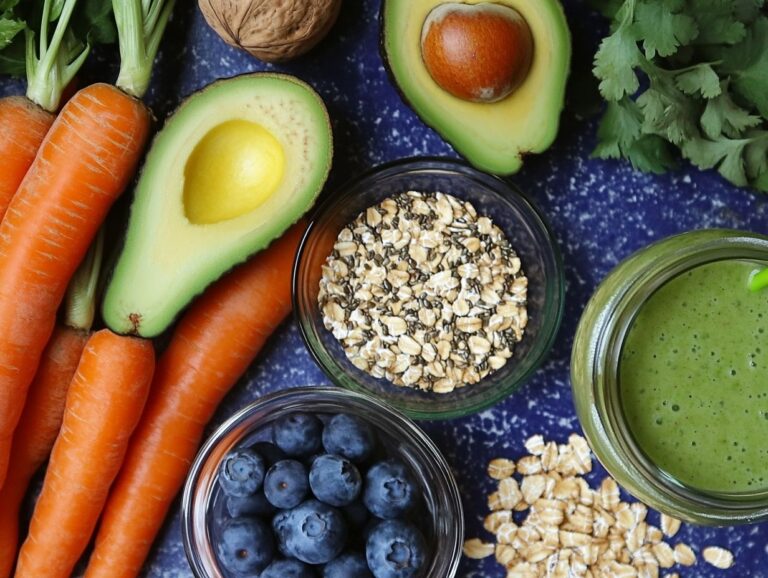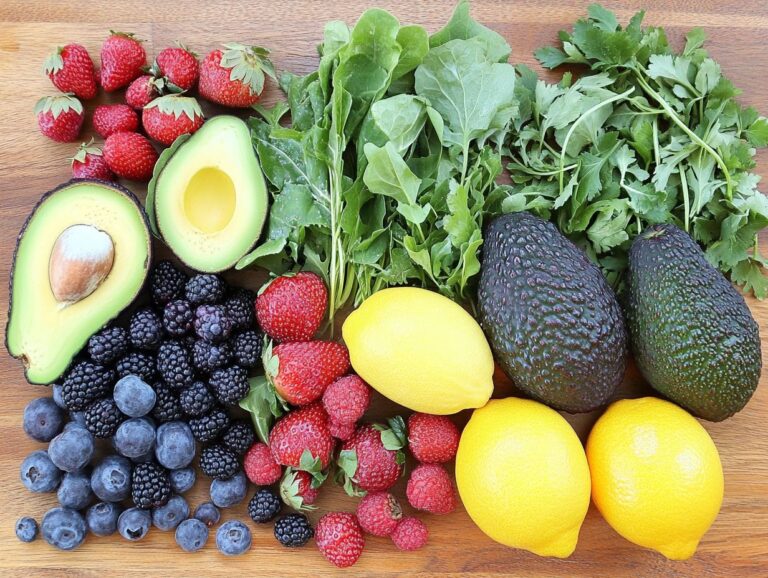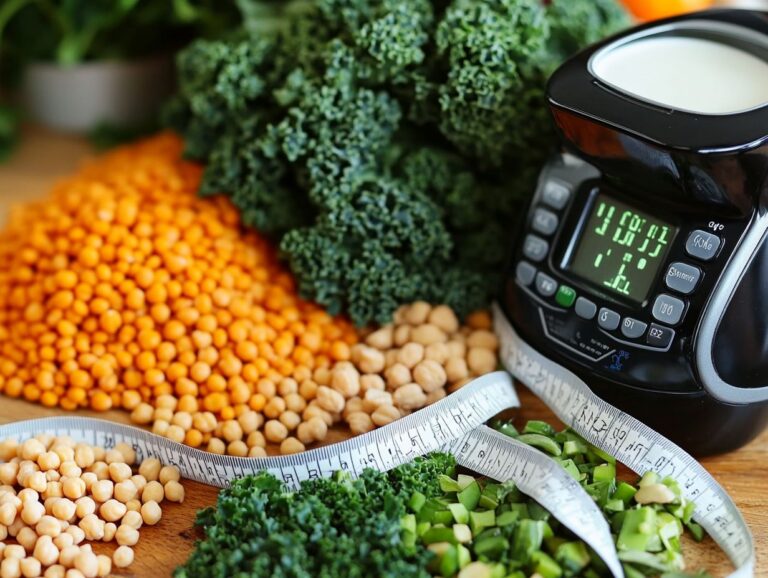If you are looking to adopt a healthier lifestyle or identify food sensitivities, a vegan elimination diet may be beneficial. This type of eating pattern involves removing specific potential trigger foods from your meals and gradually reintroducing them to assess how they affect your body. In this article, we will explore the health benefits of a vegan elimination diet, provide guidance on how to prepare for it, and offer step-by-step instructions on how to implement it, along with sample vegan meal plans and essential tips for success.
What Is a Vegan Elimination Diet?
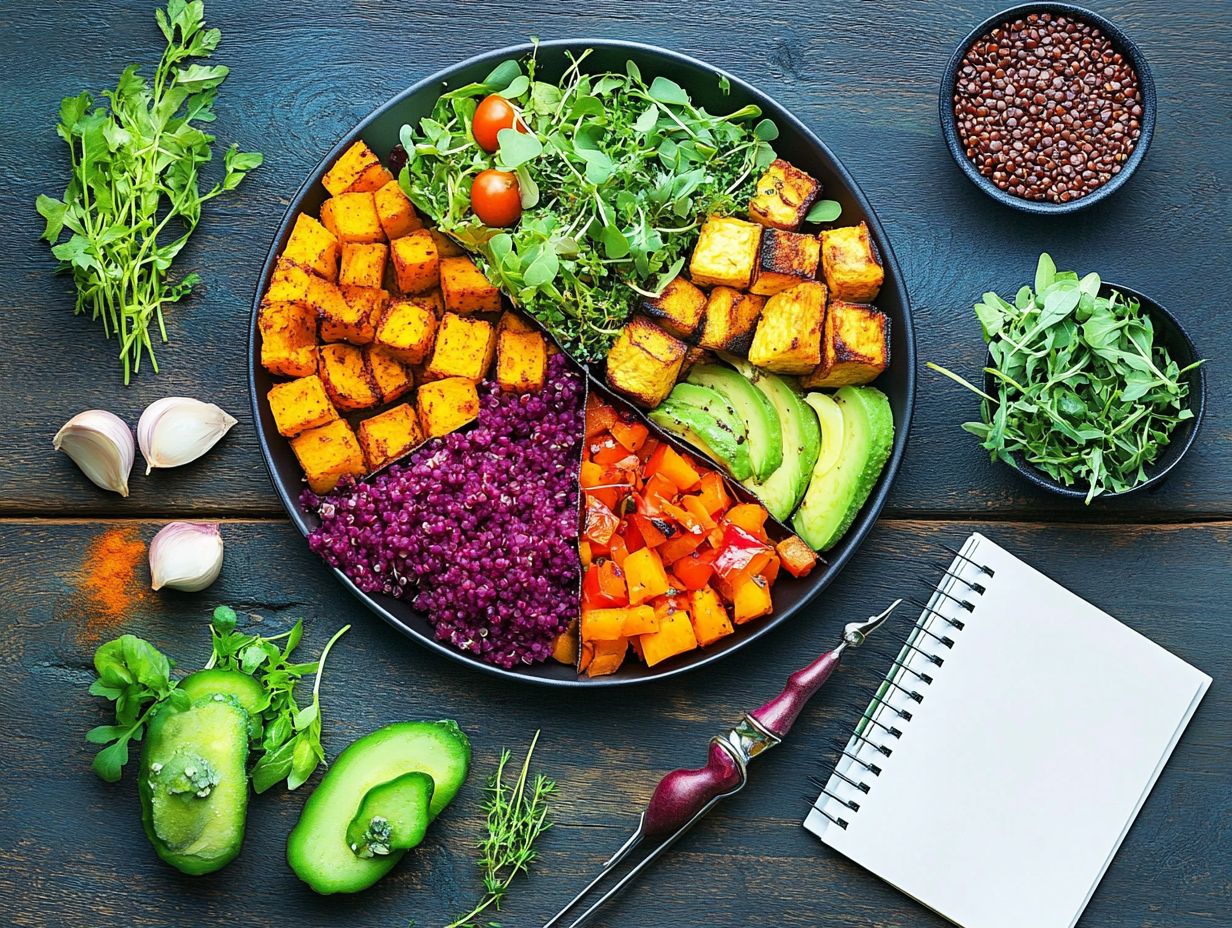
A vegan elimination diet is a dietary approach that involves removing specific foods from a person’s diet to identify food intolerances and allergens, while still adhering to a plant-based diet rich in whole foods and high-quality sources of nutrition.
This method is often recommended by registered dietitians and aligns with dietary guidelines aimed at improving overall health, managing chronic diseases, and promoting nutritional counseling.
The goal of this strategy is to help individuals recognize which foods may be contributing to their health issues, thereby providing them with a clearer understanding of their nutritional needs and dietary restrictions.
Why Do People Follow a Vegan Elimination Diet?
People often follow a vegan elimination diet for various reasons, the most common being to identify food intolerances and remove dietary restrictions that could lead to nutritional deficiencies or adverse health effects, thus achieving a balanced diet.
This approach is especially beneficial for individuals with chronic health conditions, such as type 2 diabetes, as it allows them to evaluate the impact of specific foods on their overall well-being and nutritional status.
What Are the Benefits of a Vegan Elimination Diet?
A vegan elimination diet offers several health benefits, including improved health outcomes, weight loss, and a better understanding of personal nutritional needs through nutritional counseling.
By eliminating certain foods, individuals can identify specific triggers that may cause or exacerbate chronic diseases, allowing them to make optimized dietary choices that enhance overall health and well-being. This approach can also support weight loss by reducing overall caloric intake and assist in managing chronic conditions such as Type 2 diabetes and cardiovascular disease. For instance, eliminating refined sugars and unhealthy fats typically found in animal products can lead to more stabilized blood sugar levels. Incorporating nutrient-rich ingredients like quinoa and lentils can further support this dietary shift.
Incorporating whole food products, such as beans, lentils, fruits, and vegetables, can boost nutrient intake that benefits heart health. Users often report increased energy levels, likely due to the inclusion of nutrient-dense foods and whole grains that revitalize and optimize metabolic function.
Planning meals in advance can help ensure a balanced diet during the elimination process, incorporating a variety of high-quality protein sources, healthy fats, and complex carbohydrates to prevent deficiencies that may cause lethargy. Easy vegan recipes can facilitate this process.
How to Prepare for a Vegan Elimination Diet?
A vegan elimination diet is structured by utilizing vegan meal plans and meal prep strategies, along with a well-organized vegan shopping list to ensure you have all the nutrient-rich foods necessary to meet your dietary requirements. Meal-prep tips and cooking tips from experts can also be helpful.
Additionally, nutritional counseling from a registered dietitian can offer valuable insights and personalized cooking tips to enhance the effectiveness of your dietary changes. They can also provide guidance on appropriate supplements to support your vegan lifestyle.
What Foods Should Be Eliminated?
In a vegan elimination diet, common foods that are eliminated include gluten, soy, nuts, and processed sugars. These foods are often removed to help identify food intolerances and manage dietary restrictions that could pose health risks if not monitored carefully. Recipe analysis can help in determining which foods to include or eliminate.
Additionally, dairy alternatives such as almond milk and soy yogurt may also be eliminated, as some individuals do not tolerate these plant-based substitutes well. This adaptation is crucial for those following a strict vegan lifestyle.
During this phase, it is encouraged to focus on whole foods such as fruits, vegetables, legumes, and gluten-free grains like quinoa and rice, as they provide essential nutrients without the risk of triggering adverse reactions. By avoiding these specific foods, individuals can better pinpoint which items may be causing their health issues. Consulting with the Institute of Integrative Nutrition can provide additional insights.
What Foods Should Be Included?
A vegan elimination diet includes a variety of foods such as whole grains, legumes, fruits, and vegetables, all of which provide essential vitamins and minerals that promote overall well-being and align with the Dietary Guidelines for Americans.
High-quality protein sources, including lentils, chickpeas, and quinoa, are also incorporated to ensure adequate protein intake within this dietary approach. A diverse range of these plant-based foods is essential to meet the body’s nutritional needs and to prevent monotony in the diet. Incorporating vegan superfoods like nutritional yeast can enhance flavor and nutrition.
Healthy fats from foods like avocados, nuts, and seeds aid in nutrient absorption and enhance feelings of fullness.
Easy recipes for individuals following this dietary plan include:
- A quinoa salad with black beans, cherry tomatoes, and avocado dressing, a guide to veganism
- A chickpea curry with coconut milk and spices served with brown rice, exemplifying easy vegan recipes
These dishes adhere to the dietary restrictions while making the journey enjoyable and fulfilling, supporting a calorie level that aligns with weight management goals.
How Long Should the Diet Last?
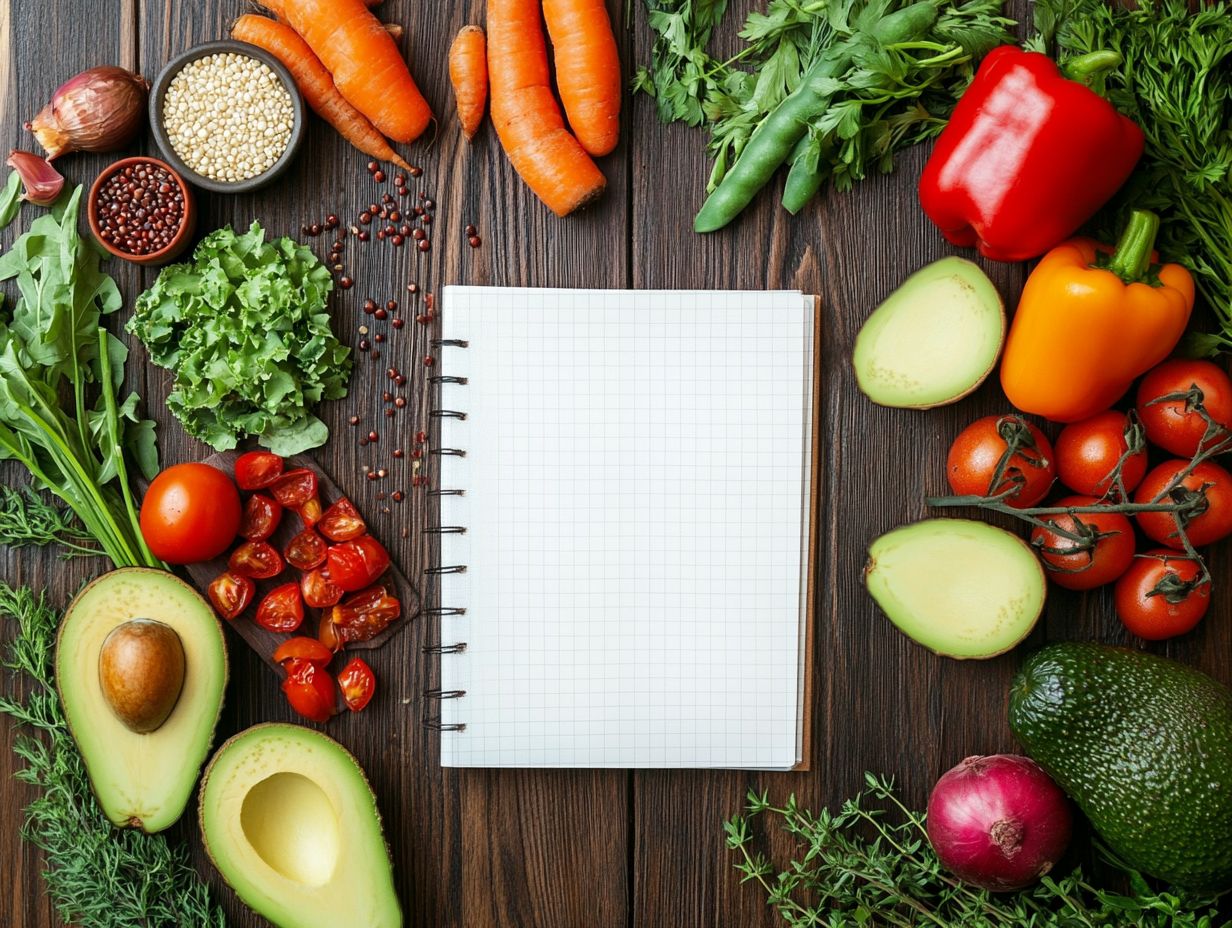
The duration of a vegan elimination diet can vary based on individual health conditions and nutritional needs, but such diets typically last between 2 to 6 weeks. This timeframe is generally sufficient for the body to respond to dietary changes and for individuals to assess their food intolerances accurately. Following health information from trusted sources like EatingWell can guide this process.
Adhering to established dietary guidelines can help determine the optimal length for each person. It is essential for individuals to monitor their bodies’ responses during this period closely. Some may discover that certain foods trigger unpleasant symptoms, while others may not experience any issues at all. Meal ideas, as suggested by dietitians like Emily Lachtrupp and Christa Brown, can support this process.
Keeping a detailed food diary can aid in documenting these reactions, which can then help identify specific food sensitivities or allergies. Ideally, individuals should collaborate with their healthcare provider and/or a registered dietitian to ensure that the elimination diet is tailored to their specific health needs and aligned with the American Dietetic Association standards.
These professionals can also help adjust the diet’s duration based on whether symptoms have improved or worsened, thus maximizing its effectiveness. Utilizing tools like the ESHA Food Processor can be beneficial for recipe analysis and tracking progress.
What Are the Steps to Follow for a Vegan Elimination Diet?
A vegan elimination diet is a structured approach that involves several key steps:
- Eliminating All Potential Trigger Foods: The first step in an elimination diet is to remove all potential trigger foods from one’s diet. This includes eliminating all animal products, dairy, and any other foods known to cause reactions in the individual, ensuring that nutrient-dense foods are maintained.
- Keeping a Food Diary: Maintaining a food diary during the elimination period is essential, as it helps individuals track their food intake and any reactions they may experience. This practice is vital for identifying potential food sensitivities.
- Methodically Reintroducing Foods: After adhering strictly to the elimination diet for a specified period, individuals will gradually reintroduce foods to observe any changes or reactions. It is important to reintroduce foods one at a time, in small quantities, allowing several days in between each addition to the diet.
- Involvement of Nutritional Counseling: An elimination diet is often followed under the guidance of a qualified dietitian or healthcare professional through nutritional counseling. This aspect is crucial, as many individuals may find it challenging to adjust to the elimination diet. Nutritional counseling assists individuals in understanding their new dietary needs and adapting their meal preparation strategies to facilitate long-term adherence to the elimination diet.
Step 1: Eliminate All Potential Trigger Foods
The first step in a vegan elimination diet is to remove the most common trigger foods that may pose health risks or lead to dietary restrictions. These typically include major allergens such as gluten, soy, and nuts, which can cause intolerances and other reactions in sensitive individuals. Incorporating snacks that align with this diet can help maintain energy levels.
To facilitate a successful and thorough elimination process, it is beneficial for individuals to maintain a food diary, documenting what they eat and any physiological responses they experience. Recognizing patterns in this diary can make it easier to identify specific foods that cause discomfort and are an essential part of vegan eating.
Once potential trigger foods are identified, they should be eliminated gradually and methodically, allowing for careful monitoring of health and bodily responses. This meticulous approach not only helps pinpoint individual sensitivities but also encourages long-term dietary changes that can be advantageous, supporting a healthy vegan lifestyle.
Collaborating with a healthcare professional is also essential, as it ensures that the elimination process is conducted properly while meeting the individual’s nutritional needs during the removal of harmful foods.
Step 2: Keep a Food Diary
A food diary is a record of food intake that individuals following a vegan elimination diet maintain to track their symptoms and any changes in their health. This practice helps identify trends and establish connections between specific foods and individual health conditions, helping with meal planning and nutritional assessment.
Those on vegan elimination diets should document everything they eat and drink, along with any symptoms or health changes they experience. The food diary enables individuals to visualize their eating patterns by recording their meals, snacks, and beverages. They can also monitor how different foods and drinks impact their well-being by noting symptoms such as bloating, headaches, and energy levels. Additionally, fluctuations in mood should be included in the diary.
While it may seem tedious, it is essential to be as detailed as possible, including when the food was consumed, the quantity, and the context (such as emotions or activities) surrounding each meal or snack.
Individuals on a vegan elimination diet may need to review their food diary regularly. Over time, trends or triggers may become evident, facilitating better decision-making regarding dietary changes that can enhance overall health or ensure specific nutrient requirements are met within a plant-based lifestyle.
Step 3: Reintroduce Foods One at a Time
Reintroducing foods one at a time is a crucial component of the vegan elimination diet, as it allows individuals to monitor their reactions and identify any food intolerances. This phase should be conducted according to dietary guidelines and, in most cases, with the assistance of a registered dietitian or through nutritional counseling to ensure it is done safely and effectively.
Individuals should exercise patience during this process, as rushing it may lead to confusion about which foods may be problematic. It is important to observe the body’s response to each reintroduced food. Symptoms such as gastrointestinal distress, fatigue, or skin reactions can help identify troublesome foods. Consulting a registered dietitian can provide additional support and ensure nutritional needs are met.
Maintaining a food diary can aid in documenting reactions and any patterns that emerge. Consulting with a healthcare professional can provide additional context and clarity regarding recorded reactions, as they can help interpret the results and adjust the diet for optimal health outcomes.
What Are Some Sample Meal Plans for a Vegan Elimination Diet?
Sample meal plans for a vegan elimination diet are beneficial in illustrating how to structure meals using simple vegan recipes that focus on nutrient-dense and whole foods. Adhering to these meal plans can help prevent nutritional deficiencies and ensure adequate protein intake.
These meal ideas help maintain good nutrition while eliminating trigger foods, resulting in an enjoyable and balanced diet. Incorporating vegan superfoods can further enhance the health benefits of each meal.
Day 1

On Day 1 of a vegan elimination diet, the following meals could be included:
- Breakfast: Oatmeal cooked with almond milk, topped with sliced bananas and blueberries.
- Lunch: A quinoa salad featuring diced cucumbers, cherry tomatoes, and bell peppers, dressed with olive oil.
- Dinner: A hearty lentil soup served with a slice of whole grain bread.
This simple meal plan offers a variety of nutrient-dense foods along with easy vegan recipes. The oatmeal for breakfast can be made creamier by adding almond milk, while the bananas and blueberries enhance both flavor and provide antioxidants.
The quinoa salad for lunch can be colorful with the addition of diced cucumbers, cherry tomatoes, and bell peppers, while the olive oil dressing contributes healthy fats that complement the fiber in the quinoa, similar to a plant-based Mediterranean diet.
For dinner, the lentil soup can be seasoned with garlic, cumin, and herbs, and the whole grain bread adds warmth and nutrition to the meal.
Day 2
A well-structured vegan meal plan for Day 2 includes a breakfast smoothie made with spinach, banana, and almond milk, a lunch of chickpea salad, and a dinner featuring stir-fried vegetables with brown rice.
These easy vegan recipes incorporate nutrient-dense foods that are perfect for meal prep. This balanced selection offers a good mix of macronutrients while adhering to sound nutritional principles.
Fresh greens and whole grains are staples of a healthy diet due to their rich content of vitamins and minerals. Preparing the chickpea salad in bulk ahead of time will save valuable minutes during the week and allow the flavors to meld beautifully.
Additionally, the stir-fry can be quickly assembled using pre-chopped vegetables, making it an ideal option for busy evenings. Meal prep not only promotes healthier eating habits but also enhances the efficiency of the cooking process.
Day 3
On Day 3 of the whole foods diet plan, breakfast features chia pudding topped with berries, lunch consists of a vegetable and hummus wrap, and dinner includes black bean tacos with avocado.
Utilizing various cooking techniques can enhance both flavor and nutrition while adhering to whole foods. Chia pudding serves as an excellent source of omega-3 fatty acids, and the addition of antioxidant-rich berries further boosts its nutritional value.
The vegetable and hummus wraps offer a satisfying combination of textures and flavors, and a squeeze of lemon juice can brighten their taste. Black bean tacos serve as a perfect base for flavorful spices such as cumin and chili powder, while the addition of fresh avocado contributes healthy fats.
The food choices for Day 3 incorporate wholesome ingredients to ensure that each meal positively impacts health.
Day 4
On Day 4, breakfast could feature savory avocado toast topped with tomato slices, followed by a lentil and vegetable stew for lunch, and quinoa-stuffed bell peppers for dinner.
This meal plan showcases the versatility of easy vegan recipes while emphasizing meal prep and nutrient-dense foods.
To start the day on a high note, consider enhancing the avocado toast with a sprinkle of hemp seeds for added protein and crunch, along with a squeeze of fresh lemon to elevate the flavors.
For lunch, enrich the lentil and vegetable stew with spices like cumin and turmeric, which will introduce a warming touch and a burst of color, making for a hearty meal.
For dinner, the quinoa-stuffed bell peppers can be complemented by a light drizzle of tahini dressing, adding a creamy texture that perfectly balances the firm peppers and fluffy quinoa.
Incorporating such a variety of ingredients not only maintains nutritional balance but also engages the palate with diverse textures and flavors.
Day 5
Day 5 Meal Plan
Breakfast: Start your day with a refreshing fruit salad topped with nuts and seeds. This combination not only adds a variety of flavors but also provides protein and healthy fats.
Lunch: For lunch, enjoy a Mediterranean farro salad that includes roasted vegetables and chickpeas to enhance both flavor and texture.
Dinner: In the evening, savor a hearty vegetable curry. Enhance the dish with a variety of spices and serve it alongside quinoa or brown rice.
These easy vegan recipes, featuring whole foods, offer satisfying meal ideas for the day.
What Are Some Tips for Success on a Vegan Elimination Diet?
Success on a vegan elimination diet can be achieved by engaging in meal preparation, utilizing cooking tips to enhance flavors, and ensuring that nutritional needs are met, all of which contribute to maximizing the health benefits of the diet. Consulting resources like the Dietary Guidelines for Americans can provide additional insights.
1. Plan Ahead
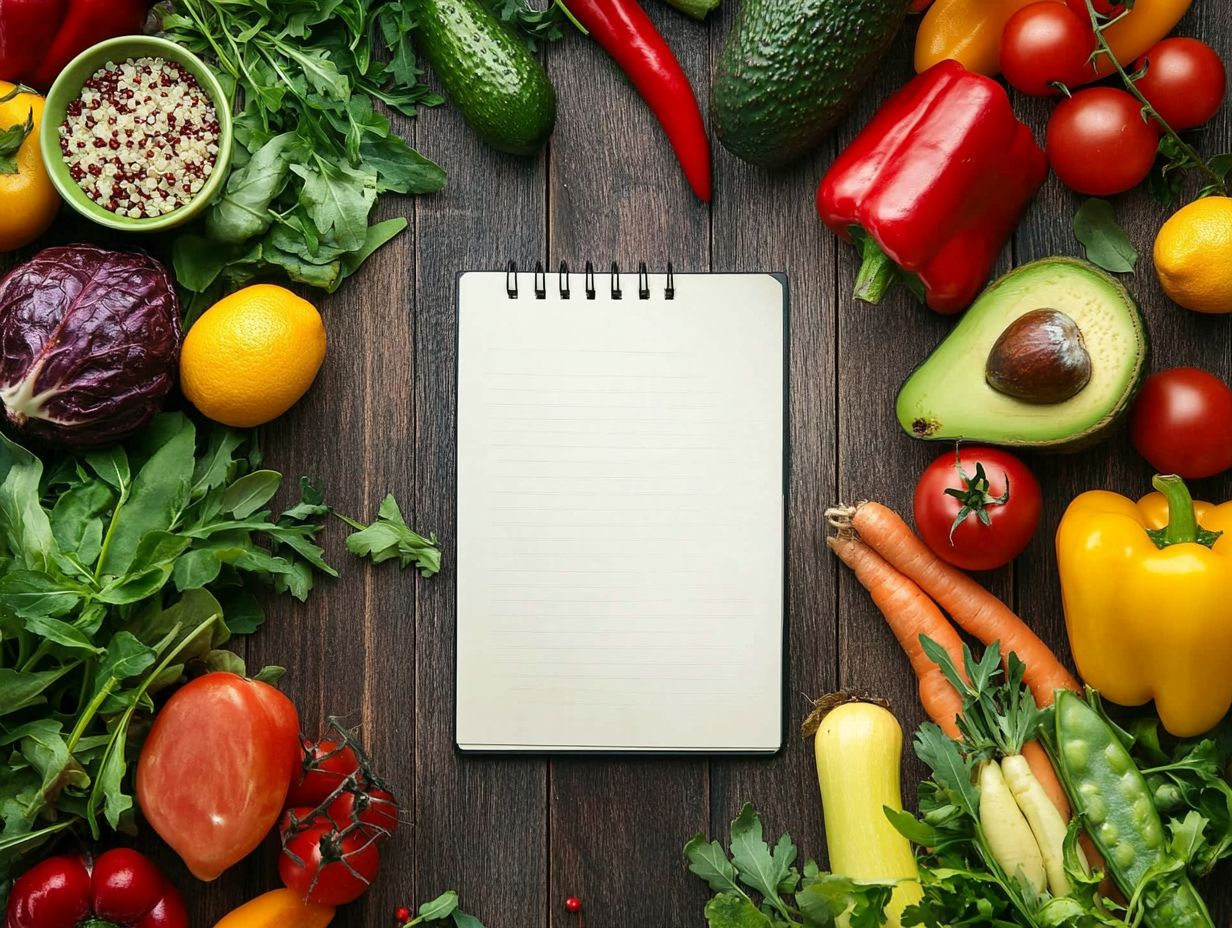
Planning ahead is essential for a vegan elimination diet, as it allows individuals to prepare healthy meals that adhere to their dietary restrictions while maximizing the diet’s health benefits. Creating a vegan shopping list and utilizing meal-prep tips can streamline this process.
By designating a specific time each week to plan meals and snacks, individuals can significantly reduce the likelihood of unintentional eating or opting for unhealthy substitutes. It’s helpful to choose a day of the week to sit down with pen and paper to write out favorite recipes that comply with the diet.
Once meal options are selected, creating a vegan shopping list based on these choices will streamline grocery shopping and minimize the temptation to purchase items that should be avoided. This approach supports a plant-based diet that meets nutritional needs.
In terms of cooking, batch cooking can be a time-saver by allowing individuals to prepare larger quantities of grains, beans, or sauces for use throughout the week. Utilizing kitchen tools such as slow cookers or instant pots can also simplify cooking tasks and make the process more enjoyable. Recipe analysis can further enhance meal prep efficiency and ensure meals are aligned with dietary goals.
2. Stay Hydrated
Hydration is a crucial component of any diet, including a vegan elimination diet, as it supports overall health and helps mitigate potential side effects that may arise from dietary changes.
Proper hydration aids in digestion, enhances nutrient absorption, and can alleviate side effects such as fatigue or headaches, which some individuals may experience when transitioning to a plant-based diet.
For those following a vegan elimination diet, maintaining consistent fluid intake is essential. Consuming fruits and vegetables with high water content can help ensure adequate hydration while providing important vitamins and minerals.
To promote proper hydration, it is beneficial to include foods with high water content in meal plans and:
- Set reminders to drink water throughout the day
- Keep a water bottle nearby
- Enjoy herbal teas
Monitoring the color of urine is an effective way to assess hydration levels, with light yellow being the optimal color.
3. Get Enough Nutrients
Adequate nutrient intake is essential when following a vegan elimination diet, as individuals must include a variety of nutrient-rich ingredients to reap health benefits and prevent nutritional deficiencies. This can be best achieved through a well-planned approach that balances meals with various food groups. Consulting with a registered dietitian can help tailor the diet to individual health conditions and ensure optimal protein sources are included.
Emphasis should be placed on whole grains, legumes, nuts, seeds, and a diverse array of fruits and vegetables. By incorporating foods such as lentils, quinoa, and chickpeas into the diet, individuals can obtain not only protein but also essential vitamins and minerals. These high-quality sources of nutrition support both health maintenance and weight loss goals.
Additionally, individuals should be mindful of potential nutrient gaps, which may necessitate the consideration of supplements to maintain optimal nutrition. Foods rich in omega-3 fatty acids, such as chia seeds and flaxseeds, are excellent vegan superfoods that contribute to overall well-being. Consulting with a registered dietitian can also help tailor a meal plan to ensure all nutritional needs are met.
4. Listen to Your Body
Listening to your body during a vegan elimination diet is crucial, as it allows you to understand how different foods impact your health and helps you adjust your eating pattern to better meet your nutritional needs and address food intolerances.
By being attuned to the signals your body sends—such as energy levels, digestive comfort, or skin reactions—you can gain insight into how specific vegan foods and nutrient-dense foods affect your overall well-being.
In some cases, a response might lead to discomfort, like feeling bloated after consuming a particular legume, which could indicate an intolerance that warrants further investigation through nutritional counseling.
Adjusting your diet based on these reflections not only helps minimize negative effects but also maximizes nutrition by facilitating a more personalized approach to eating. This ongoing dialogue between your body and diet ultimately leads to sustainable health benefits and can aid in the management of chronic diseases.
What Are the Possible Side Effects of a Vegan Elimination Diet?
While a vegan elimination diet offers numerous health benefits, there are potential negative side effects that individuals should be aware of, such as fatigue, digestive disturbances, and nutritional deficiencies if the diet is not properly managed. Incorporating a variety of plant-based foods and following dietary guidelines can help mitigate these risks.
Understanding these possible side effects is crucial for effectively managing any health conditions that may arise during the course of the diet.
1. Fatigue
Fatigue is a common side effect of vegan elimination diets, often resulting from insufficient caloric intake or nutritional deficiencies. Meal prep and easy vegan recipes can help ensure a balanced diet and proper calorie level to combat fatigue.
When individuals begin a vegan elimination diet, they may not realize that they are limiting themselves from certain food groups that typically provide essential energy and nutrients. This restriction can lead to a significant decrease in total calorie intake, which is crucial for maintaining energy levels throughout the day.
It is important to emphasize the inclusion of a diverse range of nutrient-dense plant-based foods, such as legumes, whole grains, nuts, and seeds, to ensure an adequate intake of vitamins, minerals, and calories. Utilizing a vegan shopping list can simplify the process of sourcing these ingredients.
Regular monitoring of nutrient levels, particularly iron, protein, and B vitamins, can help prevent and address fatigue, ensuring that the side effects of a vegan elimination diet remain minimal and manageable. Consulting resources like the Dietary Guidelines for Americans can provide additional insights.
2. Headaches
Headaches are a common side effect of a vegan elimination diet, typically resulting from withdrawal symptoms associated with certain foods, dehydration, and nutrient deficiencies. Ensuring proper hydration and a balanced intake of nutrient-rich ingredients can help reduce the likelihood of headaches.
Caffeine and sugar, which are prevalent in many diets, can lead to headaches when there is a sudden reduction in their intake. Additionally, the absence of essential vitamins and minerals, such as B12, magnesium, and iron, can contribute to headaches, as these nutrients are vital for maintaining energy levels and overall health. Consulting a registered dietitian can provide guidance on maintaining adequate nutritional intake.
To mitigate these effects, individuals following a vegan diet should prioritize hydration by drinking plenty of water throughout the day. It is also important to include a diverse range of whole foods, such as leafy greens, legumes, nuts, and seeds, in the diet to meet nutritional needs and lower the risk of headaches while on a vegan elimination diet. Incorporating meal-prep tips can help streamline this process and ensure consistent nutrient intake.
3. Digestive Issues
Digestive issues may occur during a vegan elimination diet, especially when introducing new foods or making significant changes to food intake. Such alterations can disrupt the body’s natural digestive rhythm, potentially leading to symptoms like bloating, gas, or constipation. Following specific vegan recipes can aid in the gradual transition to new foods.
Individuals transitioning to this dietary approach should be mindful of this adjustment period and consider integrating new foods one at a time. This gradual method facilitates better digestion and helps identify any specific triggers. Staying hydrated and progressively including fiber-rich foods can support gut health and alleviate discomfort. Nutritional yeast and coconut oil can also be incorporated for additional benefits.
It is essential to listen to one’s body during this time, as this awareness aids in adapting to the diverse nutrient intake while maximizing the benefits of the new diet. Meal plans that are carefully crafted can support this process.
4. Mood Changes
Mood changes are a common side effect of a vegan elimination diet and may result from fluctuating blood sugar levels or the emotional stress associated with dietary restrictions. Incorporating protein sources like lentils, quinoa, and chickpeas can help mitigate these effects.
According to the National Institutes of Health’s library of clinical research articles, emotional side effects during an elimination diet are prevalent, with irritability and exhaustion frequently reported. Mood swings often occur because the body is accustomed to certain food sources, and the new dietary changes may not provide the necessary nutrients. Recipe analysis can help ensure meals are balanced and supportive of emotional health.
Careful meal planning can help maintain emotional well-being during an elimination diet. Improving emotional health can be achieved by consuming balanced meals that include a variety of whole foods, such as high-quality sources of protein and healthy fats:
- Legumes
- Whole grains
- Colorful vegetables
- Fruits
Balanced meals help stabilize blood sugar levels, which in turn supports consistent energy levels and a stable emotional state. Eating balanced meals at regular intervals is essential, as it’s challenging to feel good when the body lacks energy. Additionally, mindfulness practices and regular exercise can further enhance emotional health during an elimination diet. Consulting health information from reputable sources can also be beneficial in crafting effective meal ideas.
